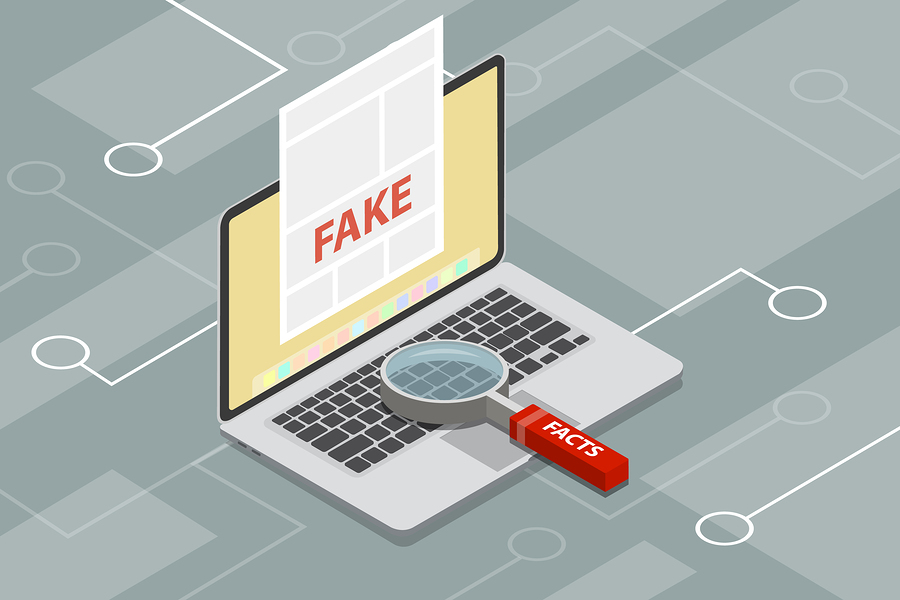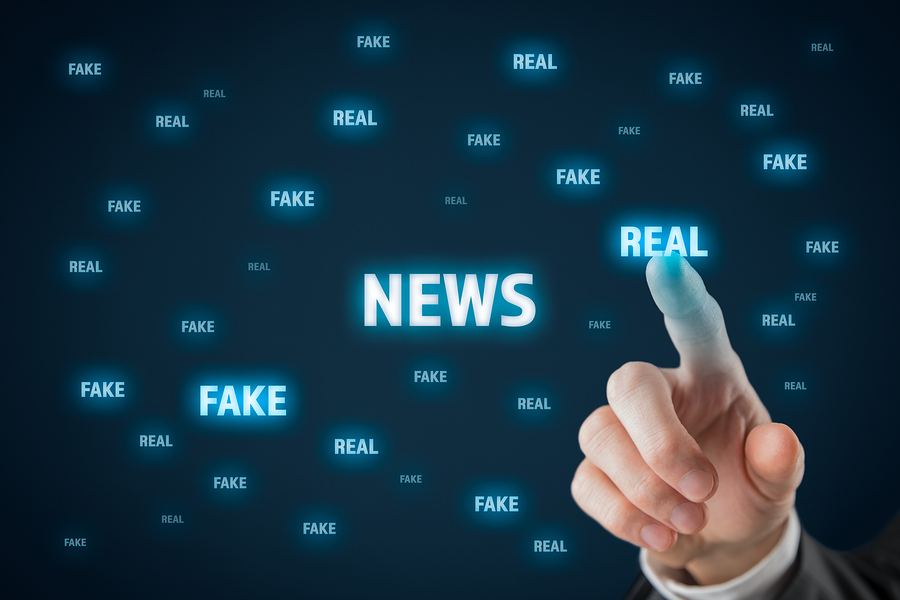Disinformation epidemy is a global phenomenon with severe consequences. What can education do to address it? What is media and information literacy? How can this competence be developed in the classroom? Why is it crucial for educators to teach it?
Photo: Bigstock.
Mexico, 2018: In August, two men were beaten and burned to death in Acatlan, Puebla due to false WhatsApp rumors that accused them of “stealing children.” Nigeria, 2018: In June, 11 men were killed in Mangu due to a series of images and messages circulating on Facebook. The misinformation made locals believe the men were part of a group that was trying to attack the place.
The United States and the United Kingdom, 2016: During the presidential and Brexit elections, respectively, disinformation chains that polarized society were unleashed in social media. Brazil, 2018: Throughout the presidential elections of this South American country, a similar phenomenon happened.
The examples presented above are just some of the emblematic cases that show how misinformation is a problem that extends throughout the world and entails serious consequences.
Misinformation is a phenomenon that has existed for centuries, but the new information technologies — including the Internet and social media — have potentiated its strength. While digital platforms have brought great benefits, they have also allowed false information to be produced, disseminated and expanded at a rate and proportions never seen before.
International data prove it is a global problem.
On Internet alone, there are 1.3 billion web pages that allow 3.7 billion users to interact and exchange information daily, according to the document A Digital Single Market for the benefit of all Europeans (2019) made by the European Commission. On the other hand, online manipulation and misinformation have been used in at least 18 countries during elections, according to the report Freedom on the Net (2017) by Freedom House.
Faced with a problem of such large dimensions, what can education institutions and teachers do? How can educators teach children, adolescents and young people to be critical with the content they consume?
International organizations are clear: the disinformation epidemy is undeniable and it can not be resolved without the help of teachers and educational institutions.
“Educational institutions, news media, and public authorities should invest in independently run digital media and information literacy (MIL) efforts to increase awareness and understanding of media and information, digital technology, and data analytic”, explains the European Commission in the document Report of the High Level Expert Group on Fake News and Online Disinformation (2018).
Teaching students to question constantly is essential for democracies
Teaching students (regardless of their age or grade) to analyze the information they consume is inserted into a larger story: one that is directly linked to the instruction of critical thinking, a crucial skill that is part of the civic education.
To understand this idea better, an anecdote that Chris Sperry wrote in his article “Fake News and Media Literacy: An Introduction” (2018) is useful.
“This past April, I gave a workshop on integrating critical thinking and media literacy to 40 teacher trainers in Istanbul, Turkey. At the end of the presentation, an educator stood up and said, ‘If we teach like this, we could get fired or even arrested.’ Immediately a second teacher jumped up and said, ‘We must teach our students to question—that is the foundation of our role as educators.’
Photo: Bigstock.
“This past April, I gave a workshop on integrating critical thinking and media literacy to 40 teacher trainers in Istanbul, Turkey. At the end of the presentation, an educator stood up and said, ‘If we teach like this, we could get fired or even arrested.’ Immediately a second teacher jumped up and said, ‘We must teach our students to question—that is the foundation of our role as educators.’
As the Turkish teacher that Sperry writes about mentioned, teaching students to question is key. This idea can be translated as developing their critical thinking, a skill that is part (or should be a part) of civic education.
Why is this so important? Because all the skills related to civic education that are developed inside the classrooms have a direct impact on society: both in fighting against misinformation and strengthening of democracies.
“In a society characterized by weak civic institutions, balkanized public discourse, and profoundly unequal civic engagement, schools can offer all young people opportunities to learn fundamental facts and skills, engage with each other and with their communities, and develop dispositions and values supportive of a republican form of government”, explain Peter Levine and Kawashima-Ginsberg Kei in their essay The Republic is (Still) at Risk- and Civics is Part of the Solution (2017).
“Civic learning, when done properly, is the best vehicle to train young people to sustain our democracy. Evidence shows that it raises young people’s knowledge, skills, and dispositions and puts them on trajectories to be active citizens as adults.”
Media and information literacy, an imperative tool for the 21st century
As explained, the current phenomenon of misinformation is so serious that it has had consequences as lethal as the death of innocent people and the manipulation of national electoral processes. Education is key to combat the problem and there is a specific competence that, if taught correctly in classrooms, can contribute to the solution.
UNESCO calls this competence Media and Information Literacy (MIL). It is defined as “a combined set of competences (knowledge, skills and attitudes) necessary for today’s life and work. The MIL covers all types of media and other information providers such as libraries, archives, museums and the Internet, regardless of the technologies used.”
The definition adds that MIL encourages citizens to understand the functions of the media and information, to critically evaluate their contents and to make informed decisions as users and producers of information.
Educational initiatives to teach media and information literacy: virtual classrooms, online open courses, associations with media, digital companies and more
Efforts to teach this competence inside the classrooms, in a structured way, are emerging globally: from Canada and the United States to Brazil, from Slovakia to Italy, including countries such as Singapore and Australia. Day by day, it becomes more evident that new initiatives are needed to educate not only students, but teachers and lifelong learners to process the current immense information flows.
Multiple government institutions, as well as non-governmental organizations, universities, research centers, museums, media, among other organizations in various countries, are developing programs, initiatives or projects to teach students, from preschool to university, the competence of media and information literacy.
How do these initiatives work? How should this competence be taught?
There is not a single path, but there are many alternatives that offer resources and digital tools that can be adapted to the age of the students and the needs of the educators.
Interactive map: This map, created by the Observatory of Educational Innovation, explains in detail what education initiatives are emerging around the world to teach the competence of Media and Information Literacy (MIL). Each icon gives an overview of the initiative or project: what is it?, what is it about?, how is the competence taught?
For further information, every icon has a link that directs to the corresponding website of the initiative/project.
One way to teach this competence is through online classes. In the United States, for example, there is the Checkology®, it is a digital classroom that helps educators equip their students with tools to evaluate and interpret the news and learn how to determine what information is reliable. The School of Journalism at Stony Brook University, on the other hand, has the Center for News Literacy, which, among other resources, offers the online news literacy course “Making Sense of the News: News Literacy Lessons for Digital Citizens,” it can be accessed through Coursera.
Other educational initiatives or non-governmental organizations that offer resources, tools, workshops, classes and/or digital curricula, focused on education are: LupaEducação, in Brazil; Permanent Osservatorio Giovani-Editori, in Italy; Globsec, in Slovakia; First Draft, in London and New York; and The Media Literacy Council, in Singapore.
Media and even museums have also created educational resources for teachers, students and the general public. In the United States, The New York Times created the section The Learning Network, all its contents are designed for students and free. In the United Kingdom, BBC created something similar with BBC Young Reporter and in Australia, ABC News followed a similar path. In Washington, a museum dedicated to the news developed NewseumED.
More and more educational initiatives that seek to teach media literacy and information literacy are emerging. Not only NGOs and media organizations are interested, but also governments and big technology companies.
Italy, for example, has an initiative worth revising. Since 2017, the Ministry of Education in this country launched a program (in cooperation with large digital companies such as Facebook), it consists in classes to teach how to recognize fake news and verify information. The first phase included 8,000 Italian schools, approximately 4 million students.
On the other hand in Canada, during 2017, Google granted 500,000 dollars for NewsWise project, made in partnership with The Canadian Journalism Foundation (CFJ) and CIVIX. It’s objective: teach students how to analyze media messages and expand their knowledge about how news are produced. The pilot phase worked with 1.5 million Canadian children (between 9 and 19 years old).
In Europe, there is the High Level Expert Group of the European Commission on Digital Disinformation and False News. His strongest educational initiative is Lie Detectors, he works in Germany and Belgium and teaches students (10 to 15 years old) skills such as the identification of false news and methods to verify information.
References
European Commission (2019). A Digital Single Market for the benefit of all Europeans. EU publications. Retrieved from: https://ec.europa.eu/commission/sites/beta-political/files/a_digital_single_market_benefit_all_europeans_en_20190319_1230.pdf
Freedom House (2017) Freedom on the Net 2017: Manipulating Social Media to Undermine Democracy. Retrieved from: https://freedomhouse.org/report/freedom-net/freedom-net-2017
European Commission (2018). Final report of the High Level Expert Group on Fake News and Online Disinformation. EU publications. Retrieved from: https://ec.europa.eu/digital-single-market/en/news/final-report-high-level-expert-group-fake-news-and-online-disinformation
Levine, P., & Kawashima-Ginsberg, K. (2017). The republic is (still) at risk–and civics is part of the solution. Medford: Tufts University, September, 21, 5. Retrieved from: https://www.civxnow.org/static/media/SummitWhitePaper.fc2a3bb5.pdf
Sperry, C. (2018). “Fake News” and Media Literacy: An Introduction. Social Education, 82(4), 206-207. Retrieved from: https://www.socialstudies.org/publications/socialeducation/september2018/fake-news-media-literacy-an-introduction
UNESCO (S/A). Alfabetización mediática e informacional. Retrieved from: http://www.unesco.org/new/es/communication-and-information/media-development/media-literacy/mil-as-composite-concept/
This article from Observatory of the Institute for the Future of Education may be shared under the terms of the license CC BY-NC-SA 4.0 
)
)





)
Christian Guijosa
Christian Guijosa
Christian Guijosa